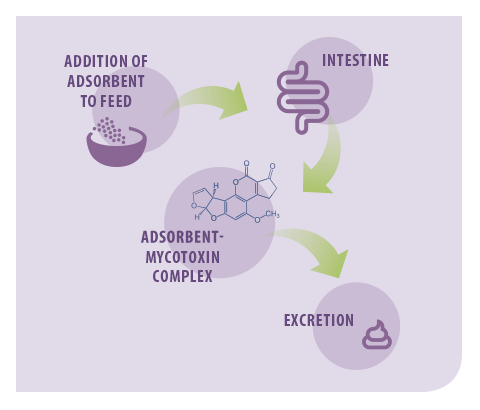We interviewed Sonia Marín, Agricultural Technical Engineer from the Polytechnic University of Catalonia (UPC), Agricultural Engineer from the University of Lleida (UdL) and Doctor in Agricultural Engineering specialized in the area of molds and mycotoxins, member of the research team on Applied Mycology of the UdL and the consolidated research group in Generalitat de Catalunya’s “Plant Products Technology Unit”, about the fascinating world of mycotoxins, especially focusing on Aspergillus flavus.


YOU HAVE SPECIALIZED IN THE STUDY OF MOLDS AND MYCOTOXINS. ¿WHAT LEADS YOU TO WORK IN THE FASCINATING WORLD OF APPLIED MYCOLOGY?
Undoubtedly, the variety of roles that fungi can play. The Fungi kingdom is broad enough to allow different approaches and applications.
![]() They are our allies, playing a crucial role in the maintenance of the biosphere as they are the main decomposers of organic matter. They also produce metabolites with medical and biotechnological applications and are responsible for the production of fermented food.
They are our allies, playing a crucial role in the maintenance of the biosphere as they are the main decomposers of organic matter. They also produce metabolites with medical and biotechnological applications and are responsible for the production of fermented food.
![]() However, they can also be our enemies, as they can also cause diseases in humans and animals: mycosis and mycotoxicosis.
However, they can also be our enemies, as they can also cause diseases in humans and animals: mycosis and mycotoxicosis.

WHAT DOES APPLIED MYCOLOGY CONSIST OF AND HOW DO THE RESULTS OF YOUR RESEARCH REACH THE ANIMAL PRODUCTION SECTOR?
Concerning Applied Mycology, during the last 40 years, our research team has worked relentlessly on generating knowledge about mycotoxins and related problems
Mycotoxins are fungal metabolites that are toxic for humans and animals, and they are usually present in vegetal raw materials, especially cereals. These raw materials are used in the formulation of feed and the ingestion of mycotoxins triggers different forms of mycotoxicosis in different farm animals.
If the ingestion is not excessively high, the effect may go unnoticed, debilitating, for example, the immune response against other diseases.
![]() We have also been working on the development and application of adsorbents in feed to reduce the exposure of the animals to mycotoxins when they consume the contaminated feed.
We have also been working on the development and application of adsorbents in feed to reduce the exposure of the animals to mycotoxins when they consume the contaminated feed.
The adsorbents, when added to the feed and ingested by the animals, form irreversibly non-digestible complexes with the mycotoxins in the gastrointestinal tract. This reduces their absorption, which means they will be excreted through the feces.

At the University of Lleida, we have the scientific-technical attention and collaboration service for companies. Particularly, from the Microbiological Quality service for the agrifood sector we advise and work on joint projects with all kinds of companies: feed manufacturers, additive-producing companies, and veterinarians working in the field.

AMONG THE MOLDS THAT YOUR RESEARCH TEAM HAS WORKED ON, ASPERGILLUS FLAVUS IS WORTH NOTING. WHAT IS THE IMPORTANCE OR THE IMPACT OF THIS MOLD ON ANIMAL PRODUCTION?
The growth of Aspergillus flavus, like any other mold, on feed or raw materials for feed manufacturing, entails a decrease in said raw material’s weight, as well as a loss in nutritional value.
In the case of A. flavus, if the strain is mycotoxigenic, it will lead to the accumulation of aflatoxins as a result of their growth.
The effects associated with aflatoxins depend on the species affected. For example, in cattle, they include liver, kidney, heart and central nervous system damage, immunosuppression and contamination of the milk with AFM1 , whereas in swine it can cause diarrhea, intestinal hemorrhages, liver and kidney damage, immunosuppression, etc.









 Micotoxicosis prevention
Micotoxicosis prevention